Drawing Hands
Drawing Hands
Anatomy Lesson 11 – Part 3
In this video lesson, you will find out how to draw hands.
Drawing Hands for Figurative Artists
A human hand has twenty-seven bones and multiple joints between them. It is no wonder that many artists find it quite difficult to draw hands. Sometimes they even admit that it is more challenging than drawing portraits.
Many artists of the past, when quoting how much it would cost to paint portraits, were counting not only how many individual faces would be in the picture, but also how many hands they have to depict.
So, let’s talk what rules will help you to depict hands realistically.
When drawing hands, keep in mind that the length of a person’s hand, from the wrist to the tip of the middle finger, is equal the height of the person’s face, from the lower edge of the jaw to the hairline.
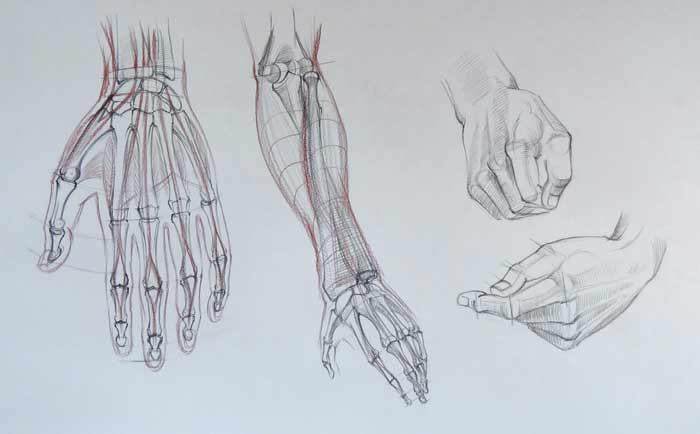
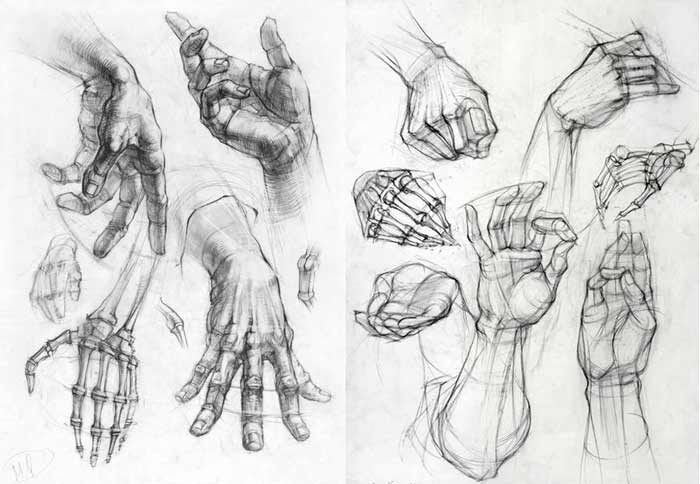

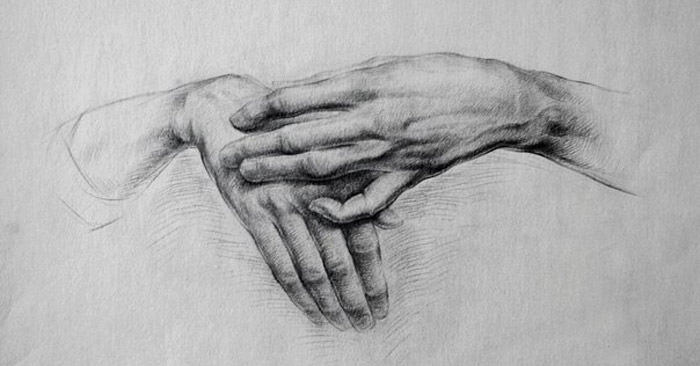

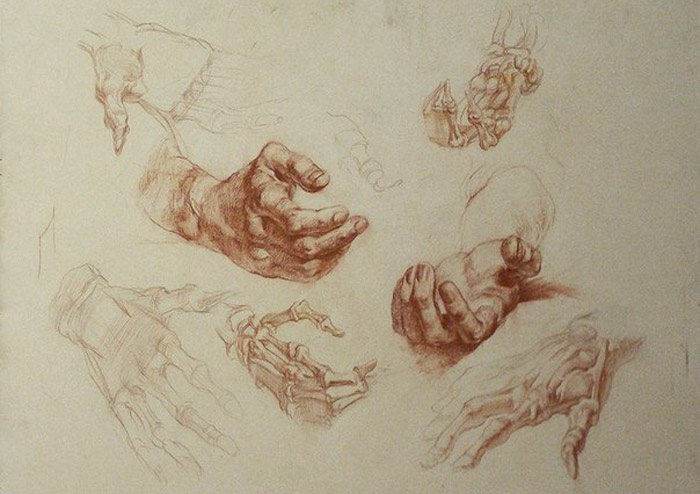
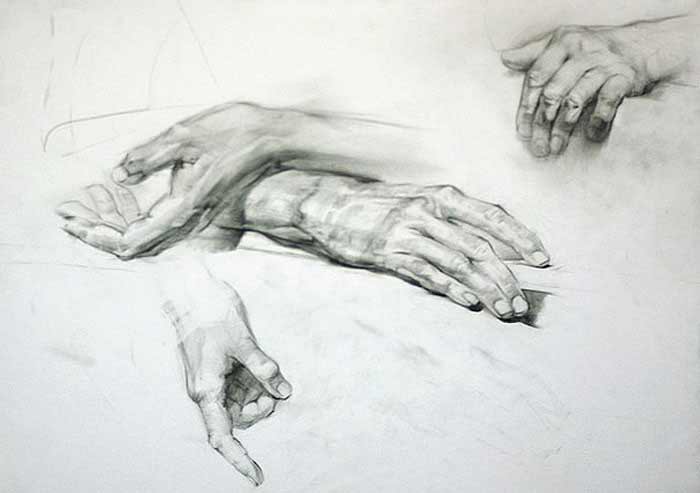

Here is a good rule to remember when you are drawing hands; you can mark virtual lines, like these axes, in pencil. It will help you avoid some mistakes in constructive drawing.
The metacarpal bones and tendons of the lower arm muscles are very close to the dorsal surface, or back side, of the hand, so, on that side, you can actually see the tendons traveling downward toward the fingers.
The metacarpal bone of the thumb is located further away from the metacarpal bones of the fingers. As you already know, the thumb has only two phalanges. However, every finger has three.
The knuckles are actually the heads of the metacarpal bones. The knuckles line (the line of the metacarpophalangeal joints) is not straight, but arched.
The first, or proximal, phalange of the finger appears just beyond the metacarpal bone.
There are three groups of muscles that are located in the hand- the group that moves the thumb, the group that moves the little finger, and the group between them.
So, in this last group, which is called the interosseous muscle group, there is one muscle, which is actually visible when the hand is in a fist. This is the first dorsal interosseous.
It is attached to the metacarpal bones of the thumb and the index finger and it inserts into the base of the first phalange of the index finger.
You can easily locate this muscle on your hand when you move your thumb towards and away from the palm. When your thumb is extended, this muscle takes on a triangular shape.
When drawing hands, keep in mind that the thumb’s axis is positioned almost perpendicular to axes of the palm and fingers. When the thumb and fingers are flexed, the thumb overlaps the second phalange of the index finger.
Here is another good rule to remember when drawing hands: the axis of the metacarpophalangeal joint of the thumb and its inner phalangeal joint, as well as axis of the thumbnail, are parallel to each other.
When drawing hands, you need to keep in mind that the width of the lower arm at the wrist is defined by the width of two bones – the ulna and the radius.
When drawing hands, do not be afraid to indicate its planes. Every surface of the hand has multiple planes.
For example, the thumb can be divided into various geometrical shapes. Drawing these shapes in perspective will greatly help you depict the hand realistically.
In a more relaxed hand position, the tip of the thumb does not overlap, but touches the second phalange of the index finger.
When drawing hands, there is one more rule you need to remember. Fingers often follow each other, so if one finger is flexed, the fingers next to it will likely be flexed as well.
The same goes for extension – if one finger is extended, the other fingers will follow this movement. This is because flexor and extensor muscles all work as groups…
[ The full lesson is avaibale to Anatomy Master Class members ]
To find out more information on drawing hands, enrol in the Anatomy Master Class
Simple Pricing, No Surprises
One-time payment - Only $97 USD
ENROLL NOW



